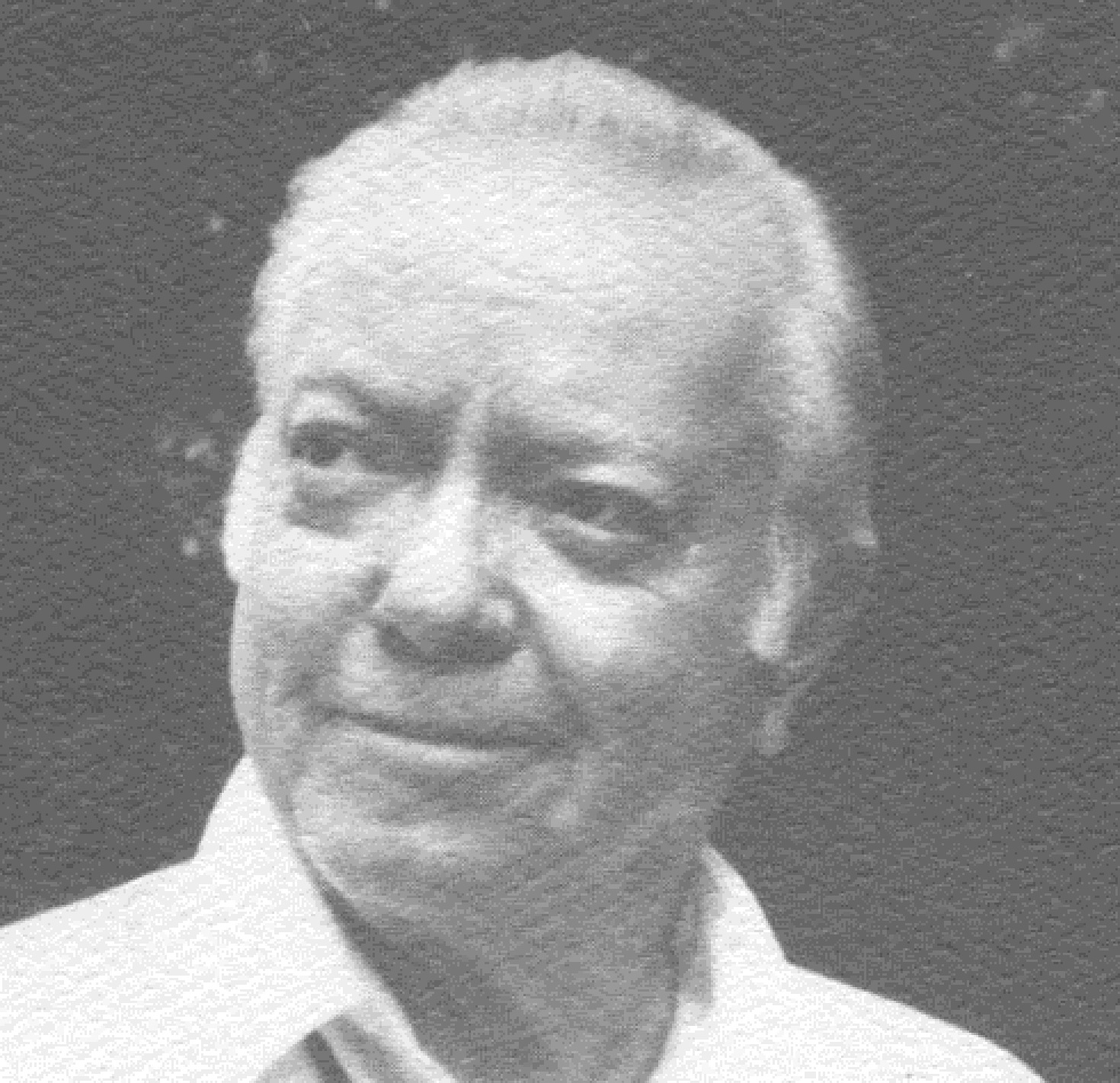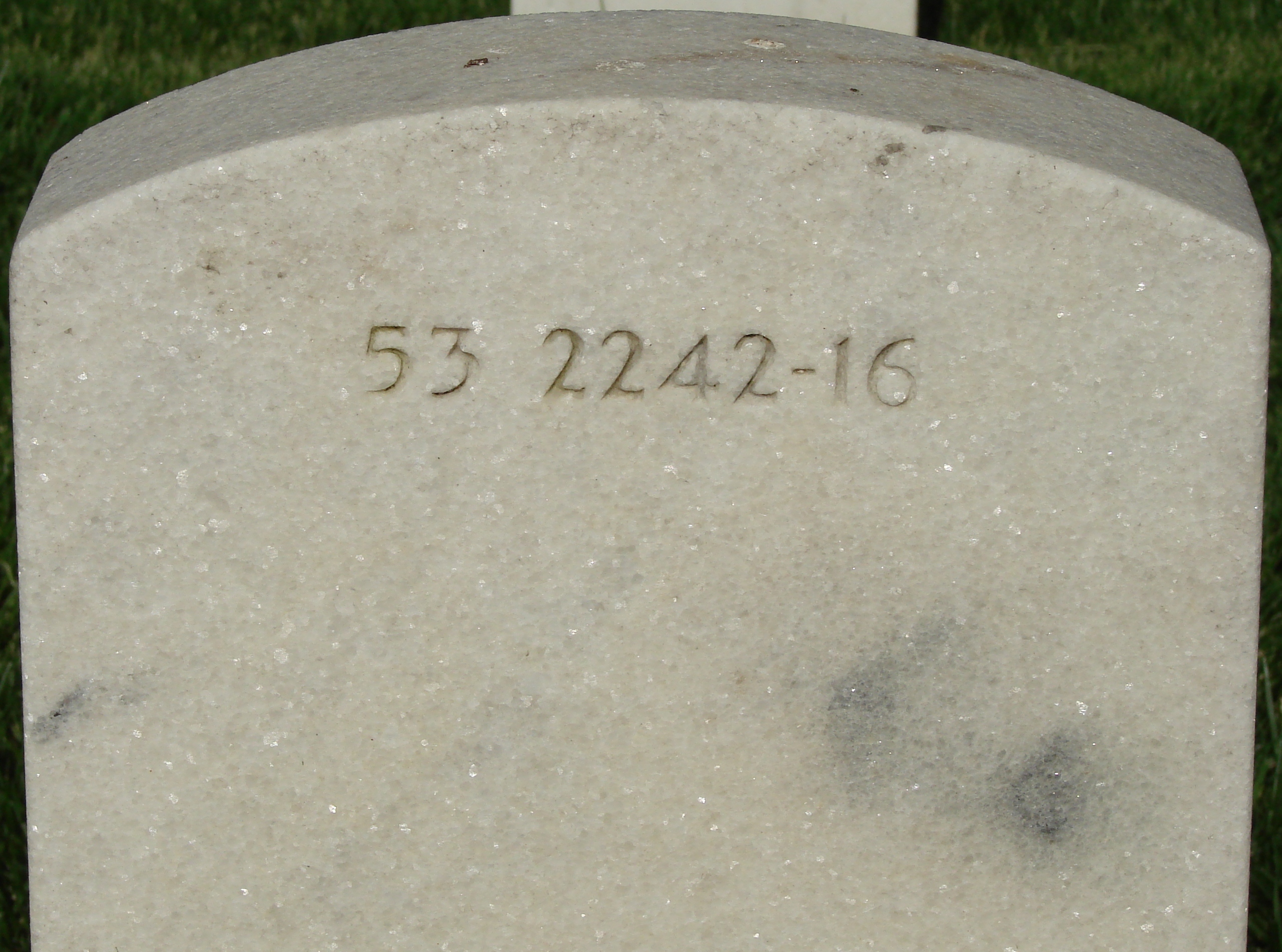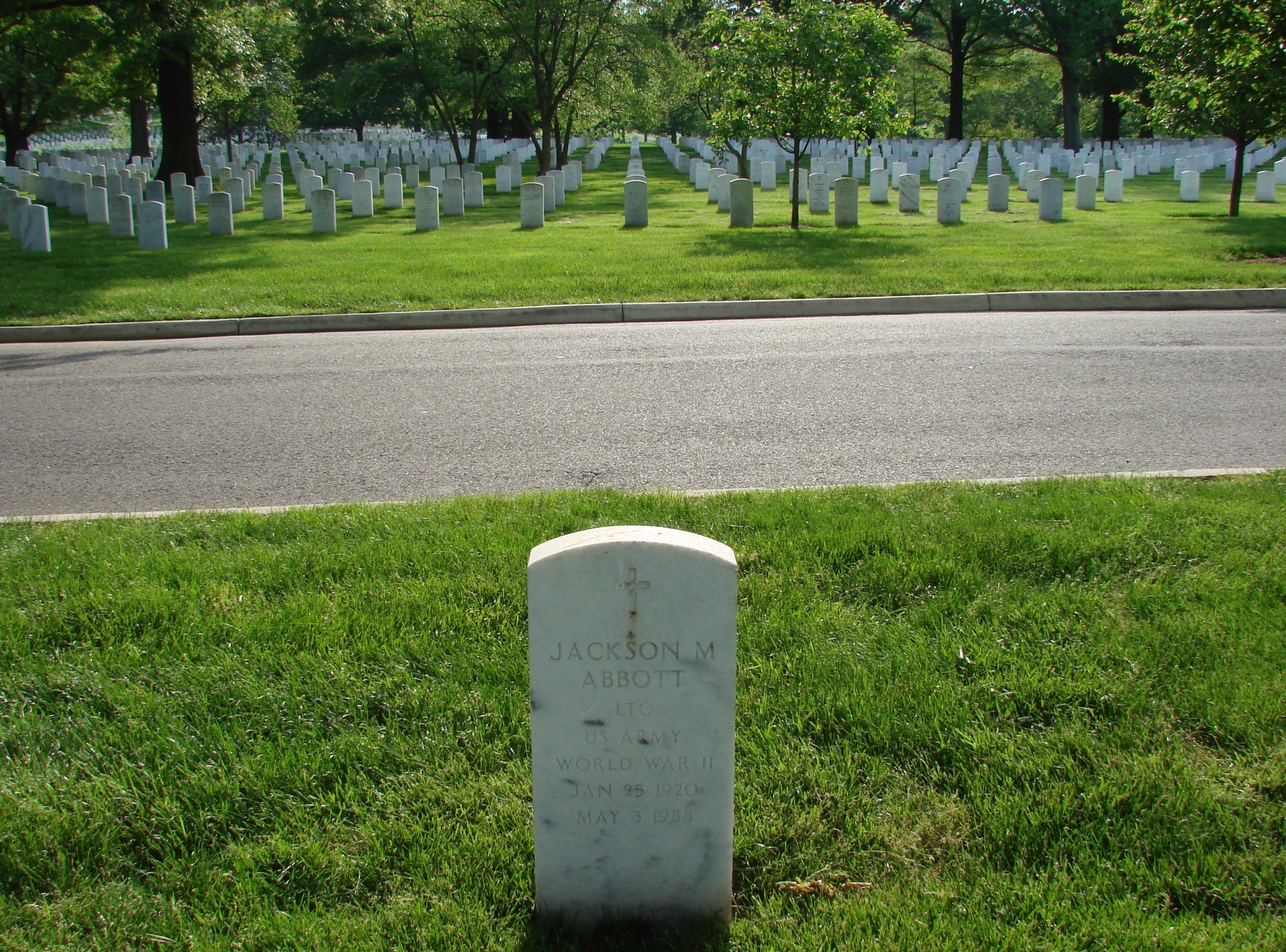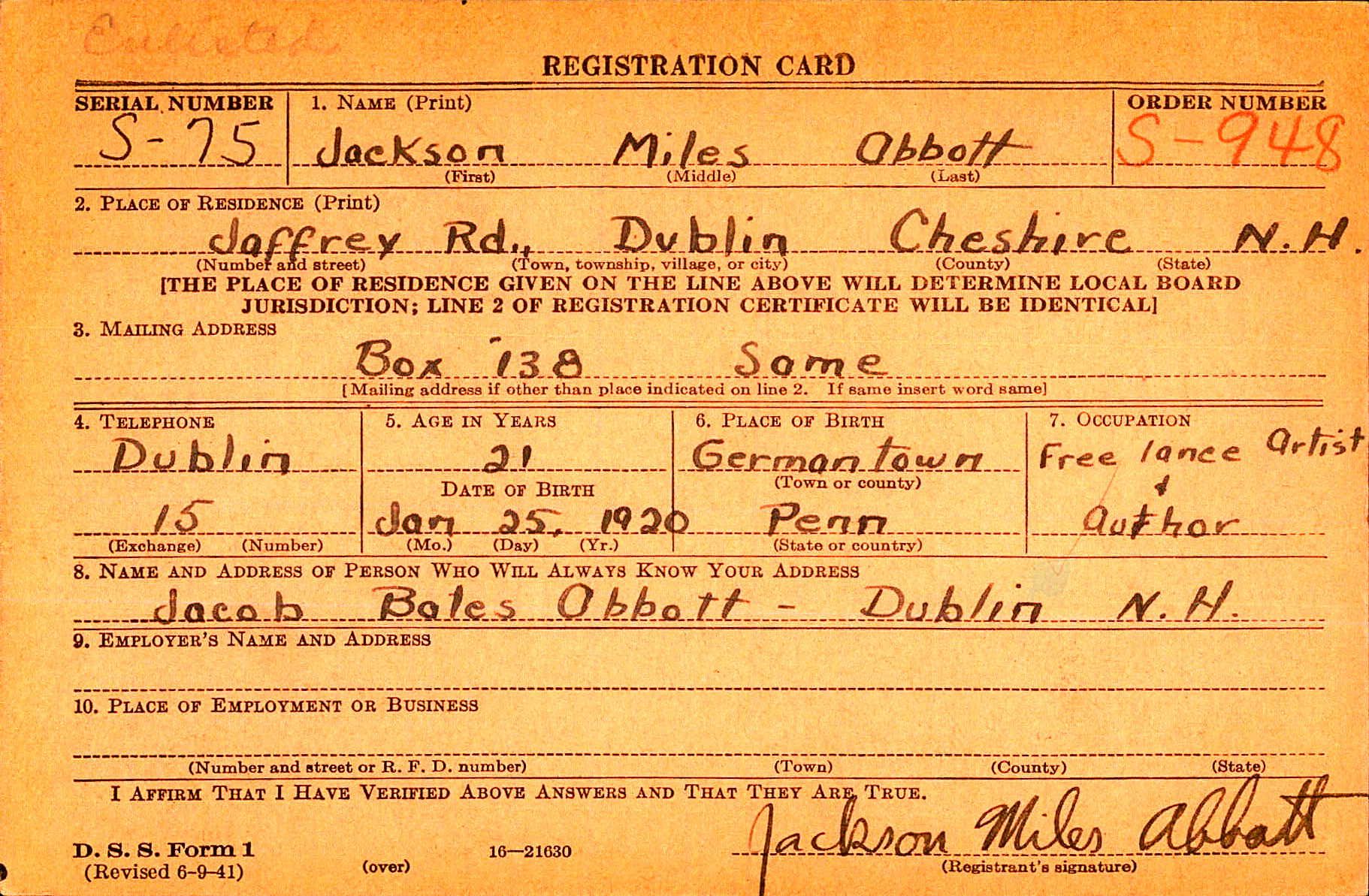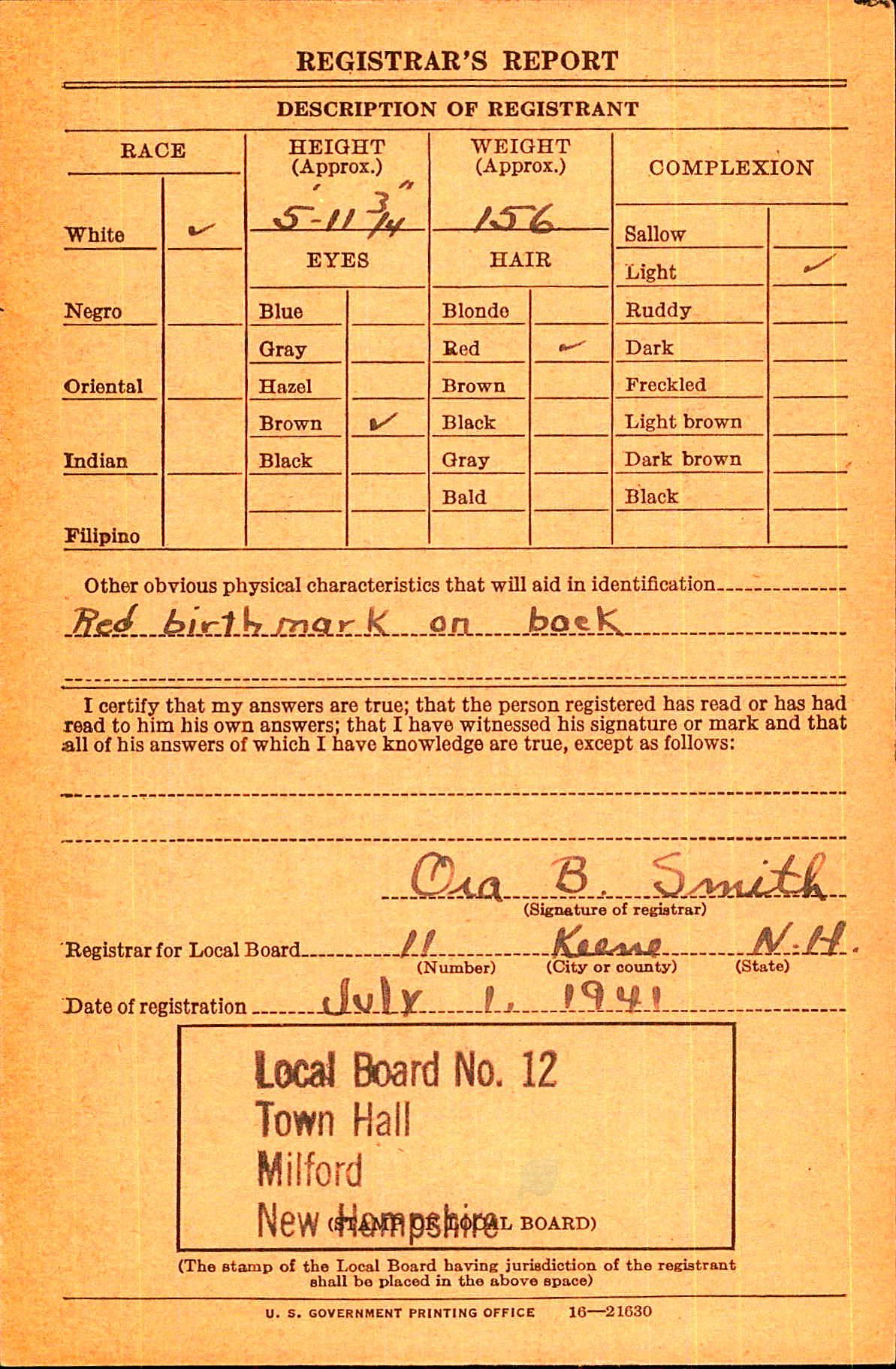Mr. Abbott first went to Fort Belvoir in 1941 as a private in the Army and in that year he initiated what became the Annual Christmas Bird Count on the military reservation. It was part of a survey the Audubon Naturalist Society has been conducting since 1900 and, except for the time during World War II when he was in Europe, Mr. Abbott conducted a Christmas bird count at Belvoir every year until the present.
And he became one of the leading ornithologists in the Washington area. He wrote and illustrated a number of books and pamphlets on birds and in 1957 his painting of eider ducks won the annual contest to become that year's federal duck stamp. Some of his work was official or scientific in nature. In 1962 and 1963, for example, he conducted a "bird hazard survey" at Washington National Airport for the old Civil Aeronautics Administration.
In 1957, at the request of the Audubon Society, he began a study of the nesting habits of the bald eagle in the Cheseapeake Bay region. The purpose was to find out why the numbers of the bird that is the national symbol were declining. DDT eventually was identified as the culprit and the pesticide has since been banned.
Mr. Abbott's contribution to solving the puzzle was to use Army helicopters and small planes of the U.S. Fish and Wildlife Service to observe the eggs in eagles' nests and report the locations of those that didn't hatch. Those were collected and subjected to laboratory analysis that showed the presence of DDT. Mr. Abbott continued his survey until his death.
But the larger part of his career as a bird watcher had to do not with science but with sightings and recordings; he said in 1984 that his life list had about 1,000 species, including 582 from the United States. He also was concerned about such matters as habitat. He was a leader in citizen efforts to preserve the Dyke Marsh and Huntley Meadows wetlands in southern Fairfax County and deplored such signs of deteriorating environment as the presence of hydrilla in the Potomac.
As it happened, he pursued both his work and his avocation at Fort Belvoir. Born in Germantown, Pa., and raised in Cambridge, Mass., he was sent there as an Army private after attending Swarthmore College. His next stops in the military were the Panama Canal Zone and the British West Indies. Then it was back to Belvoir to become an officer. After his war service in Europe -- in his spare time he wrote an article about bird watching at the front -- he went to Belvoir as a writer of training manuals.
In 1950, Mr. Abbott left active military duty and went to work at the Army Map Service as a civilian. Three years later he returned to Belvoir for the last time. An authority on land mines, camouflage and fortifications, military specialties he began during the war, he retired from the civil service in 1978 and from the Army Reserve as a lieutenant colonel in 1980. He continued to tramp Belvoir's fields and woods for the rest of his days.
Mr. Abbott's publications included an illustrated brochure called "Birds of Fort Belvoir," which was issued in January by the Fort Belvoir Environmental and Natural Resources Division, and two books, "A Beginner's Guide to Attracting Birds" and "The Birds of Trinidad and Tobago." In the 1950s and early 1960s he wrote a weekly column for the Washington Star newspaper called "This Week's Migrant" and during the years made many appearances on radio and television and in other forums to talk about
He was designated a "top volunteer" by the National Park Service.
"I think of all the birds in the woods, a bird of prey is the most exciting to watch," Mr. Abbott told The Washington Post during a bird outing in 1984. "They're thrilling to watch fly. They're such magnificent flyers. They're doing what nature intended them to do. I once saw a peregrine falcon take out a yellow-legs. Oh, it was thrilling and fast and beautiful and effortless. He came down with death on his mind. Such terrible speed. Raptors are killers, and killers can be beautiful . . . .
"I've been in love with birds since I was 8 years old and my dad was pulling me on a sled in Cambridge, Massachusetts, and we accidentally flushed a cock pheasant. It flew up and into a plate glass window and broke its neck. I went over and picked it up and had never in my life seen anything quite so magical or beautiful or sad. All those colors and arrangements of feathers . . . .
"You know, my dad got me started in all this . . . . What he told me about the world of nature ended up giving me something to last a lifetime."
Mr. Abbott was a director of the American Birding Association and the Virginia Society of Ornithology and was a member of the Raptor Society, Ducks Unlimited, the Nature Conservancy, Friends of Dyke Marsh and Friends of Huntley Marsh.
A resident of Alexandria, he was a member of Christ Church and the environmental affairs committee of the Mount Vernon Council of Citizens Associations and a past president of the Waynewood Citizens Association.
Survivors include his wife, Frances Abbott of Alexandria; four children, Medora Carter of Springfield and Elizabeth Youngs and David and Robert Abbott, all of Alexandria; his mother, Eleanor Ruth Abbott of Philadelphia, and a sister, Jaclyn Caselli of San Jose.
Mr. Abbott first went to Fort Belvoir in 1941 as a private in the Army and in that year he initiated what became the Annual Christmas Bird Count on the military reservation. It was part of a survey the Audubon Naturalist Society has been conducting since 1900 and, except for the time during World War II when he was in Europe, Mr. Abbott conducted a Christmas bird count at Belvoir every year until the present.
And he became one of the leading ornithologists in the Washington area. He wrote and illustrated a number of books and pamphlets on birds and in 1957 his painting of eider ducks won the annual contest to become that year's federal duck stamp. Some of his work was official or scientific in nature. In 1962 and 1963, for example, he conducted a "bird hazard survey" at Washington National Airport for the old Civil Aeronautics Administration.
In 1957, at the request of the Audubon Society, he began a study of the nesting habits of the bald eagle in the Cheseapeake Bay region. The purpose was to find out why the numbers of the bird that is the national symbol were declining. DDT eventually was identified as the culprit and the pesticide has since been banned.
Mr. Abbott's contribution to solving the puzzle was to use Army helicopters and small planes of the U.S. Fish and Wildlife Service to observe the eggs in eagles' nests and report the locations of those that didn't hatch. Those were collected and subjected to laboratory analysis that showed the presence of DDT. Mr. Abbott continued his survey until his death.
But the larger part of his career as a bird watcher had to do not with science but with sightings and recordings; he said in 1984 that his life list had about 1,000 species, including 582 from the United States. He also was concerned about such matters as habitat. He was a leader in citizen efforts to preserve the Dyke Marsh and Huntley Meadows wetlands in southern Fairfax County and deplored such signs of deteriorating environment as the presence of hydrilla in the Potomac.
As it happened, he pursued both his work and his avocation at Fort Belvoir. Born in Germantown, Pa., and raised in Cambridge, Mass., he was sent there as an Army private after attending Swarthmore College. His next stops in the military were the Panama Canal Zone and the British West Indies. Then it was back to Belvoir to become an officer. After his war service in Europe -- in his spare time he wrote an article about bird watching at the front -- he went to Belvoir as a writer of training manuals.
In 1950, Mr. Abbott left active military duty and went to work at the Army Map Service as a civilian. Three years later he returned to Belvoir for the last time. An authority on land mines, camouflage and fortifications, military specialties he began during the war, he retired from the civil service in 1978 and from the Army Reserve as a lieutenant colonel in 1980. He continued to tramp Belvoir's fields and woods for the rest of his days.
Mr. Abbott's publications included an illustrated brochure called "Birds of Fort Belvoir," which was issued in January by the Fort Belvoir Environmental and Natural Resources Division, and two books, "A Beginner's Guide to Attracting Birds" and "The Birds of Trinidad and Tobago." In the 1950s and early 1960s he wrote a weekly column for the Washington Star newspaper called "This Week's Migrant" and during the years made many appearances on radio and television and in other forums to talk about
He was designated a "top volunteer" by the National Park Service.
"I think of all the birds in the woods, a bird of prey is the most exciting to watch," Mr. Abbott told The Washington Post during a bird outing in 1984. "They're thrilling to watch fly. They're such magnificent flyers. They're doing what nature intended them to do. I once saw a peregrine falcon take out a yellow-legs. Oh, it was thrilling and fast and beautiful and effortless. He came down with death on his mind. Such terrible speed. Raptors are killers, and killers can be beautiful . . . .
"I've been in love with birds since I was 8 years old and my dad was pulling me on a sled in Cambridge, Massachusetts, and we accidentally flushed a cock pheasant. It flew up and into a plate glass window and broke its neck. I went over and picked it up and had never in my life seen anything quite so magical or beautiful or sad. All those colors and arrangements of feathers . . . .
"You know, my dad got me started in all this . . . . What he told me about the world of nature ended up giving me something to last a lifetime."
Mr. Abbott was a director of the American Birding Association and the Virginia Society of Ornithology and was a member of the Raptor Society, Ducks Unlimited, the Nature Conservancy, Friends of Dyke Marsh and Friends of Huntley Marsh.
A resident of Alexandria, he was a member of Christ Church and the environmental affairs committee of the Mount Vernon Council of Citizens Associations and a past president of the Waynewood Citizens Association.
Survivors include his wife, Frances Abbott of Alexandria; four children, Medora Carter of Springfield and Elizabeth Youngs and David and Robert Abbott, all of Alexandria; his mother, Eleanor Ruth Abbott of Philadelphia, and a sister, Jaclyn Caselli of San Jose.
Inscription
US Army
World War II
Family Members
Sponsored by Ancestry
Advertisement
Advertisement



